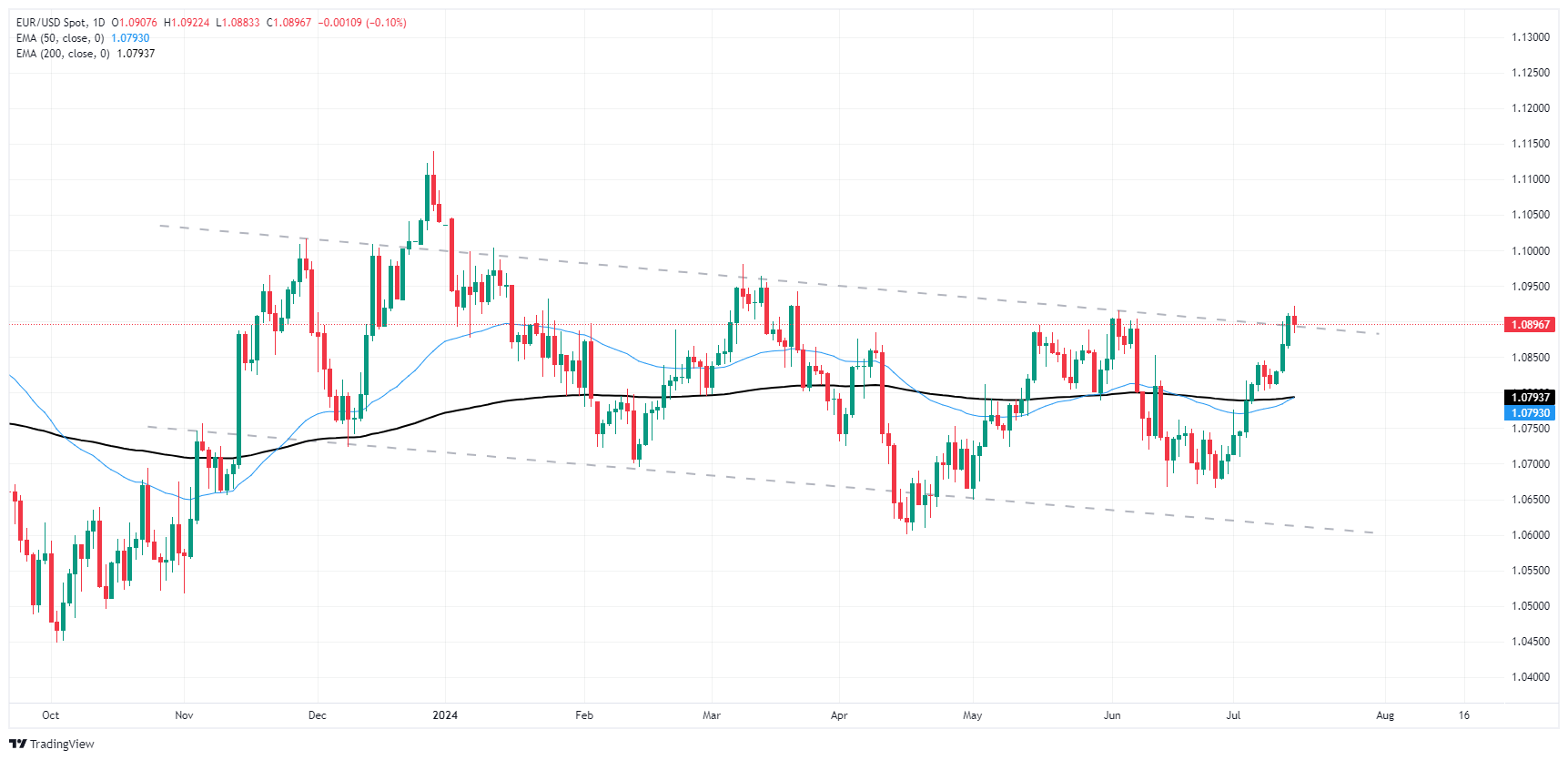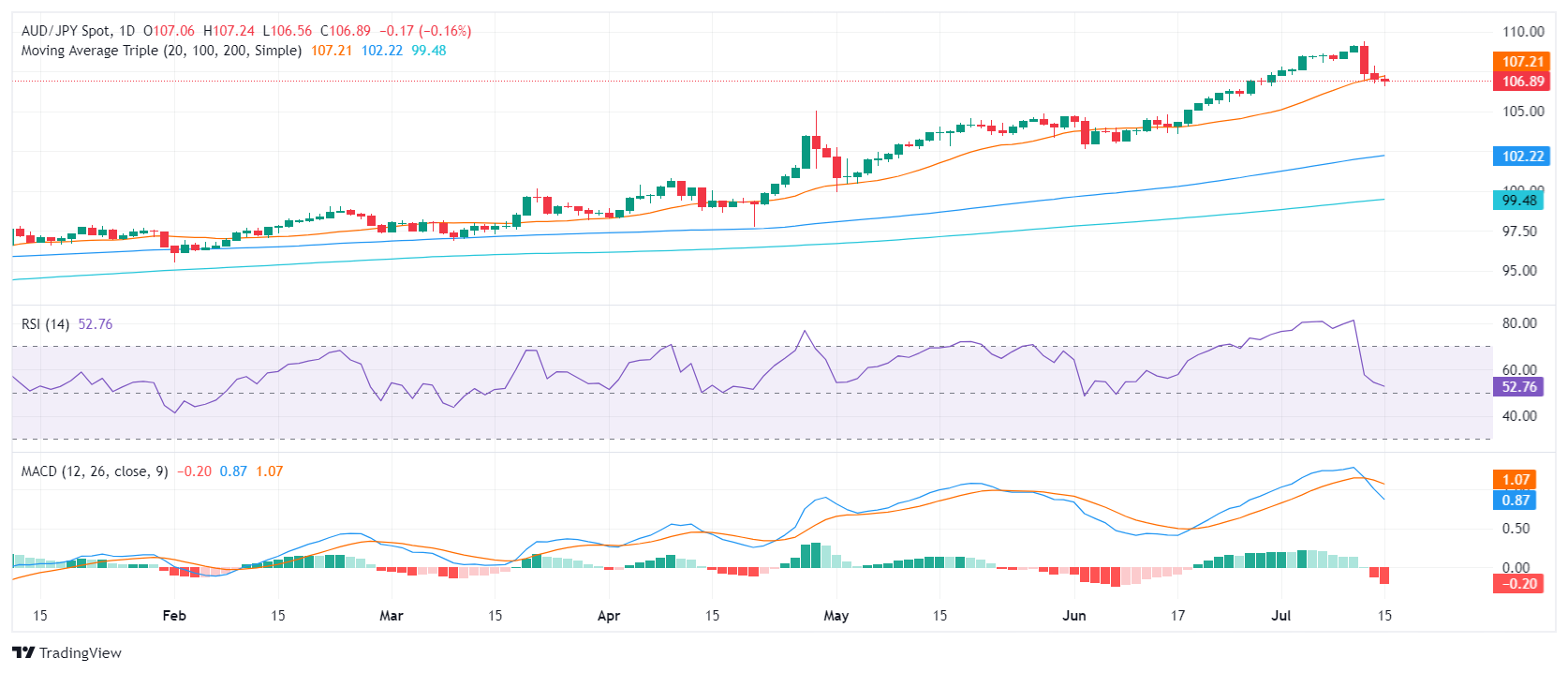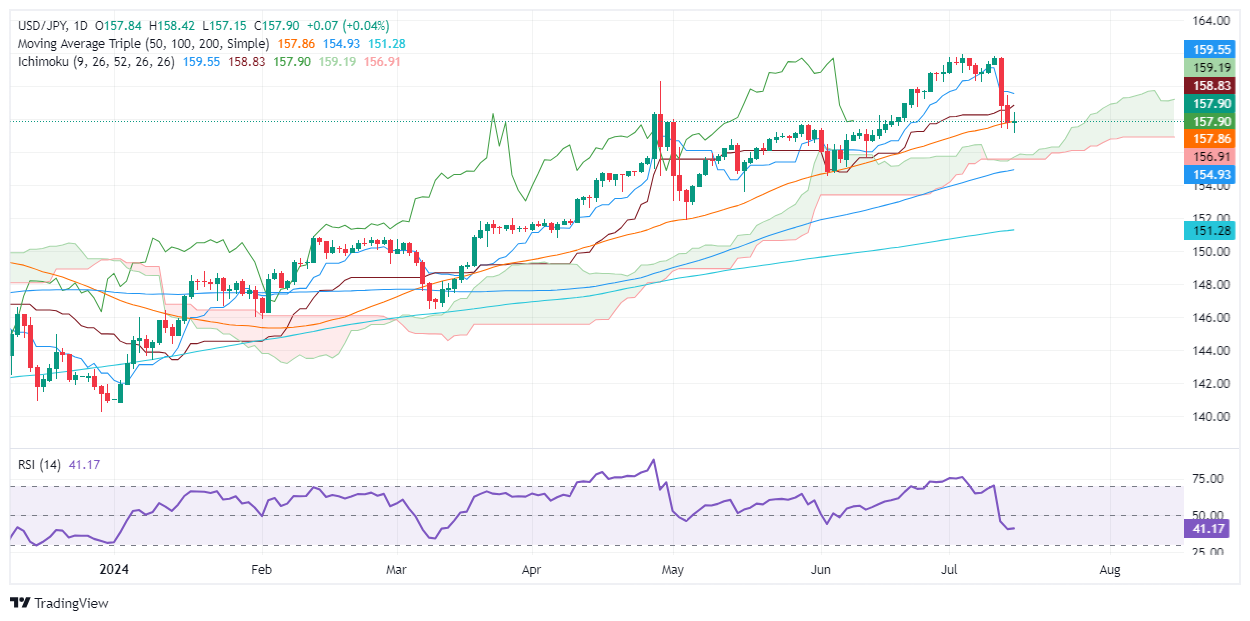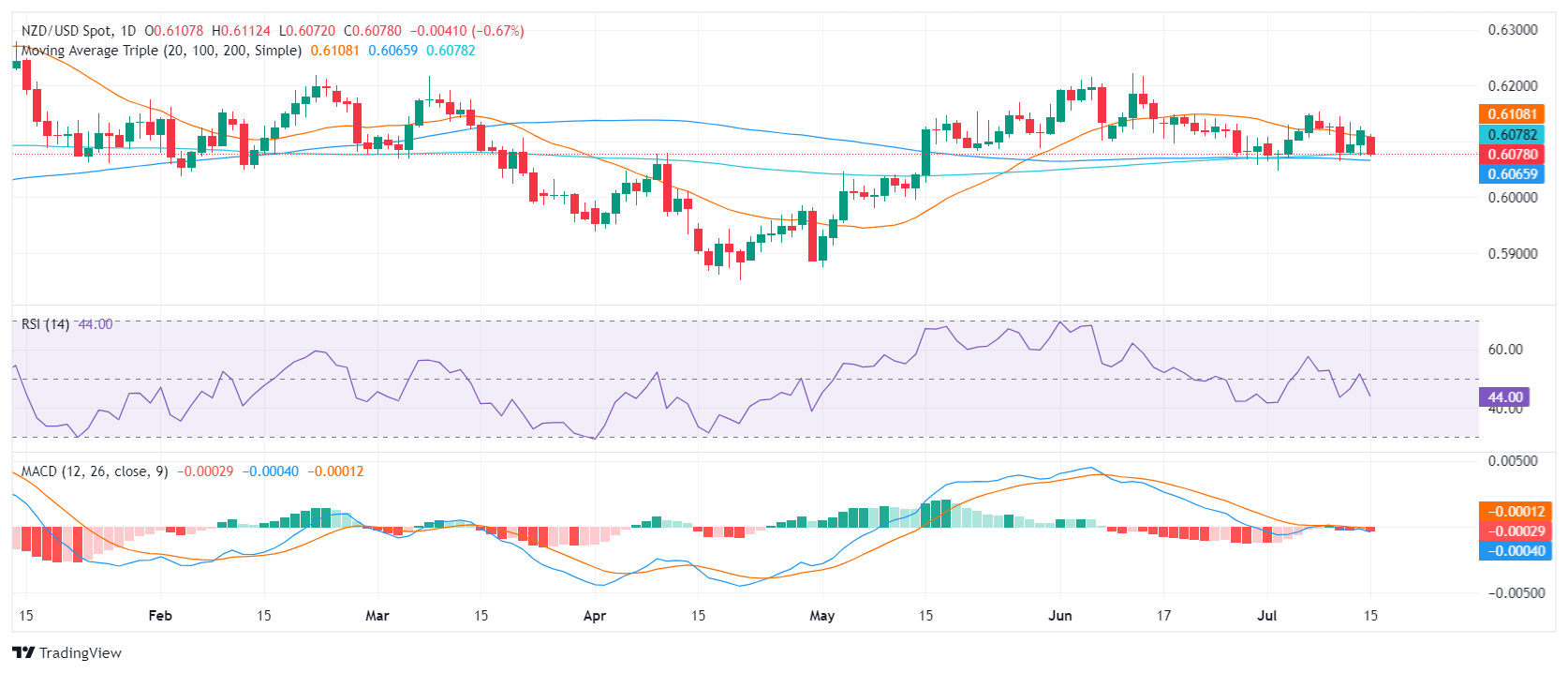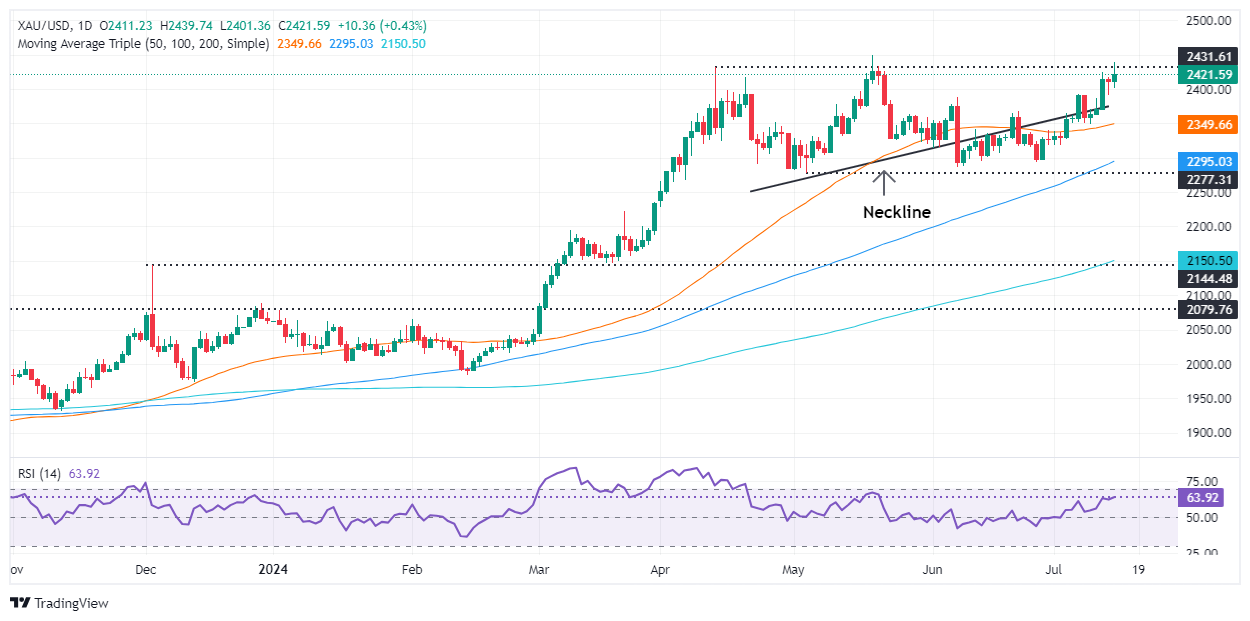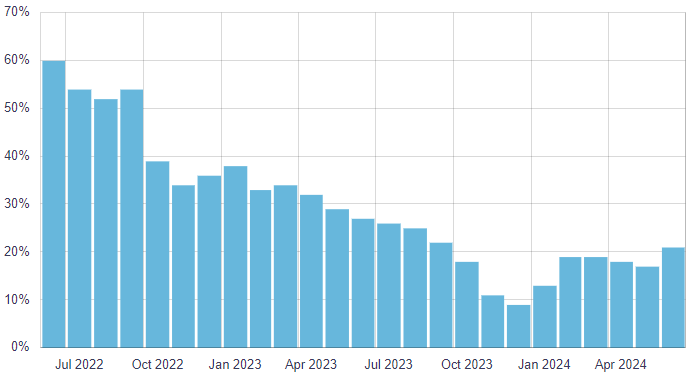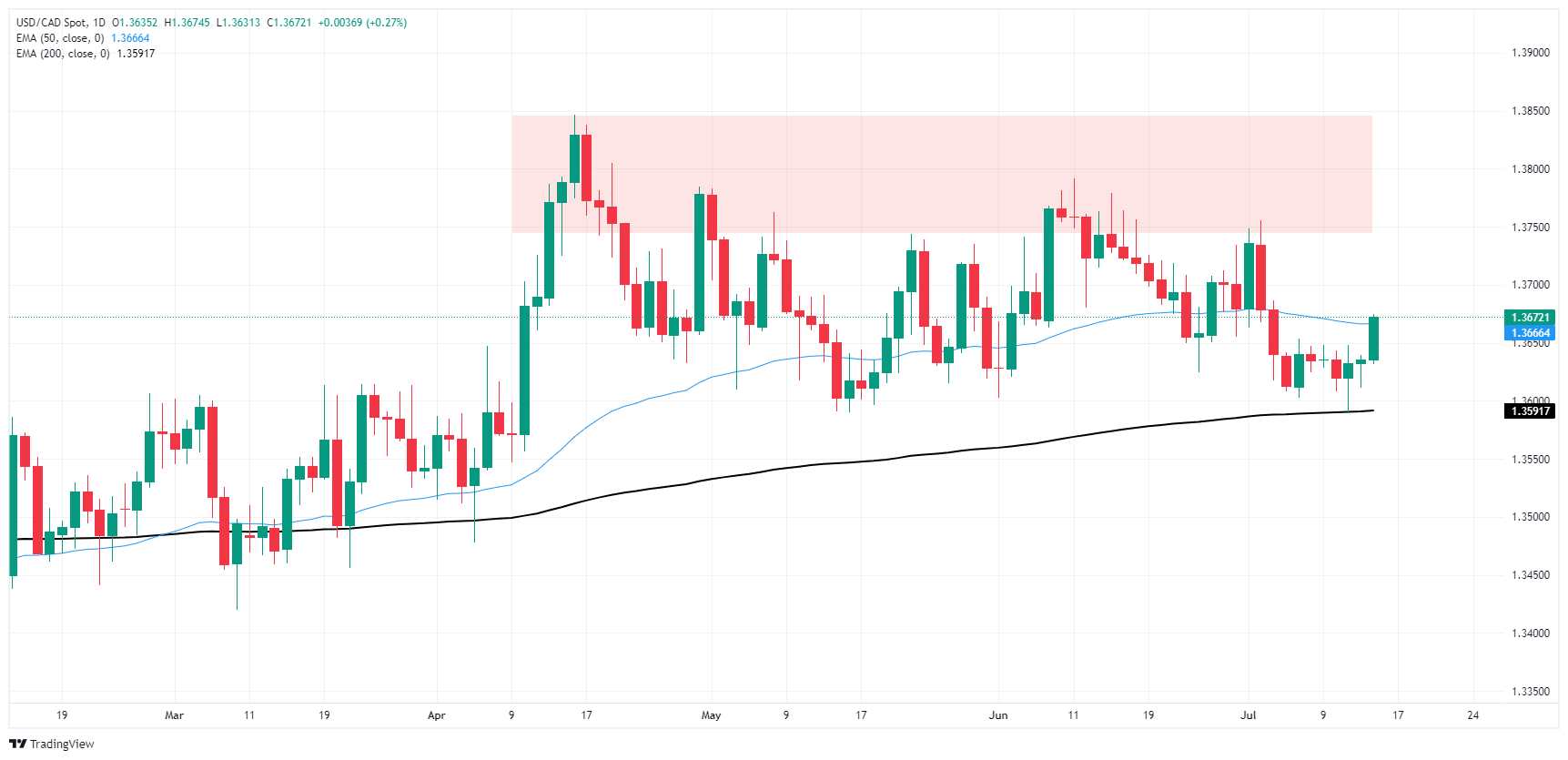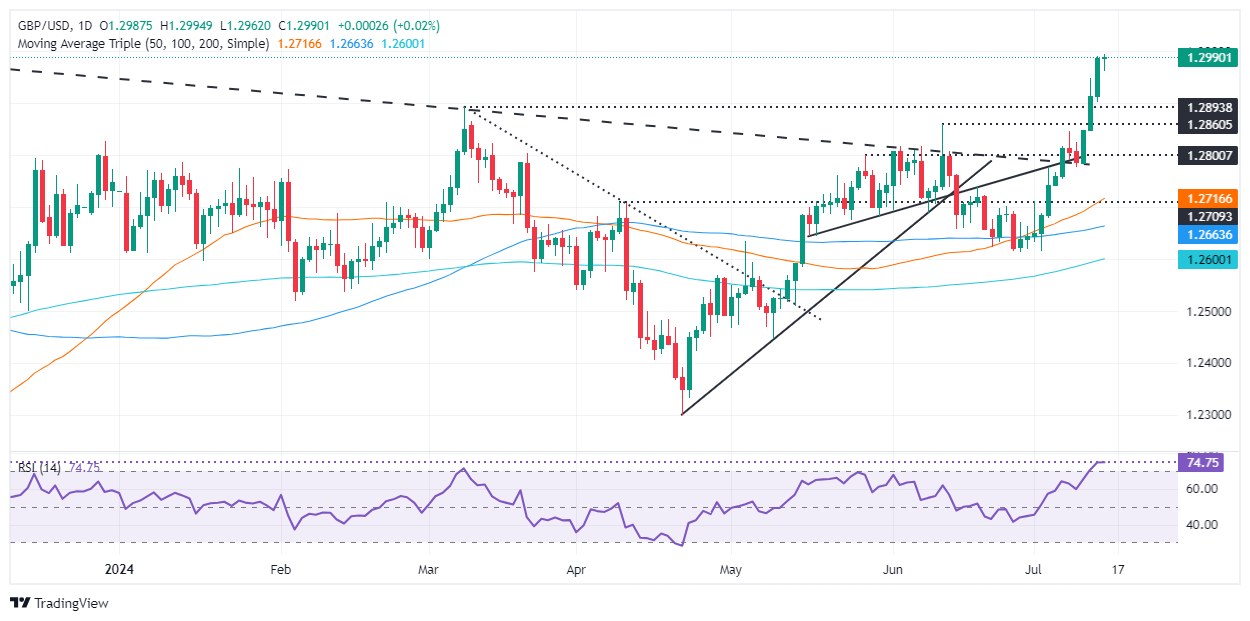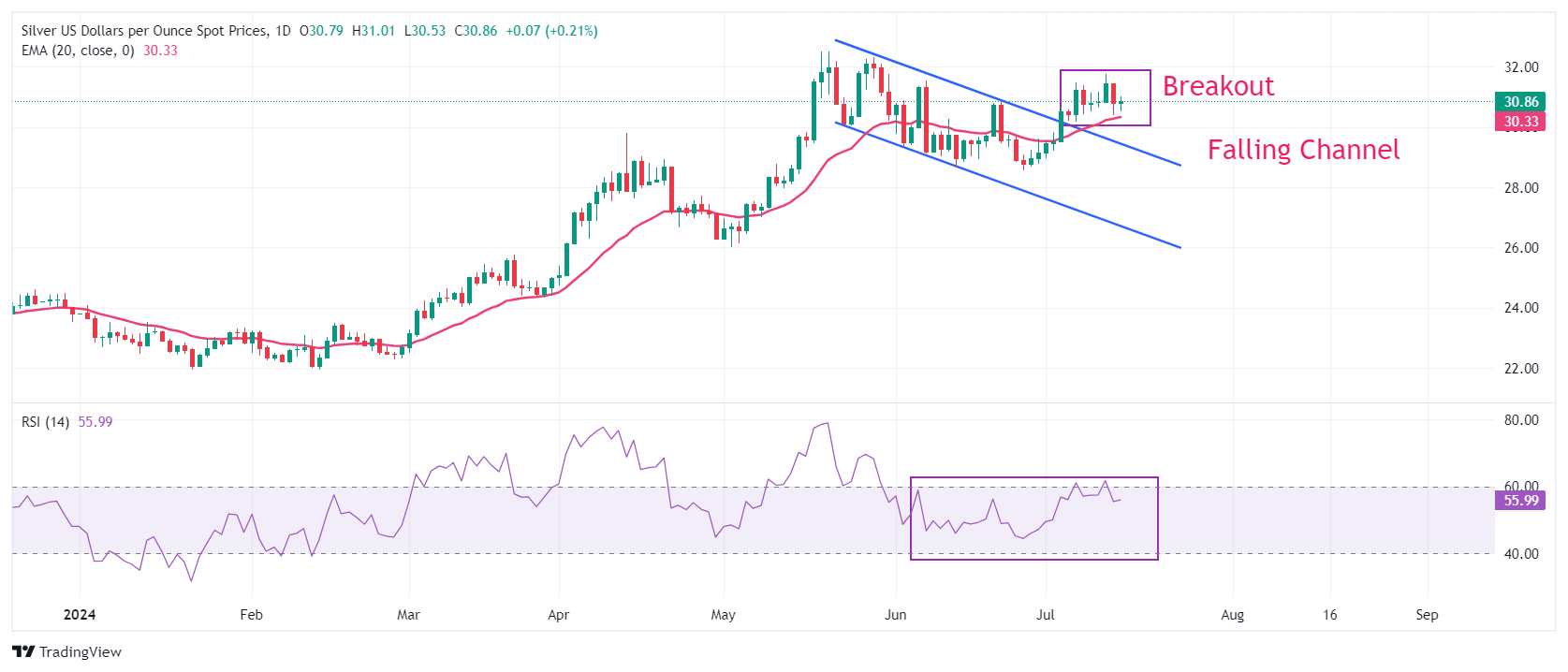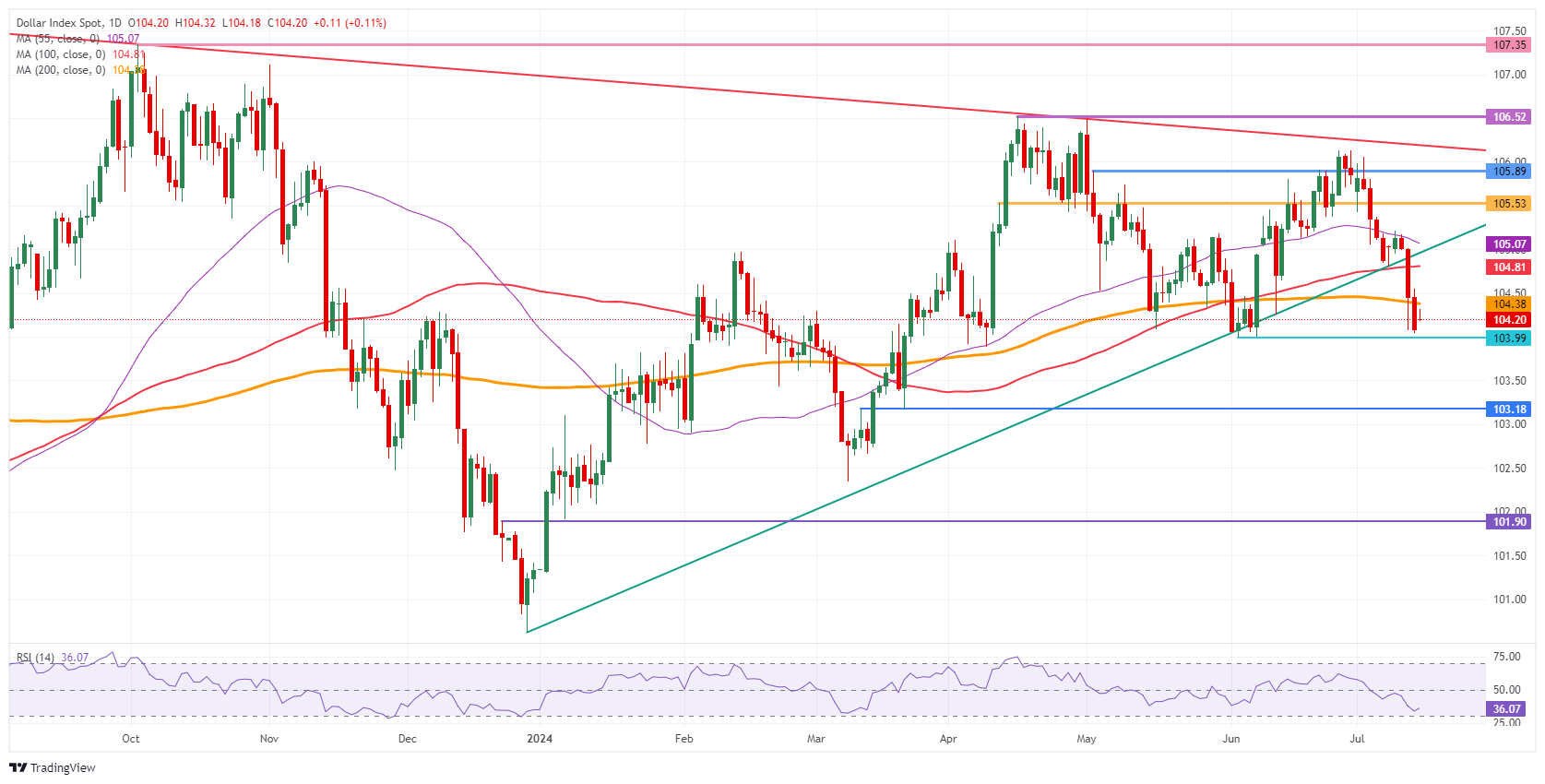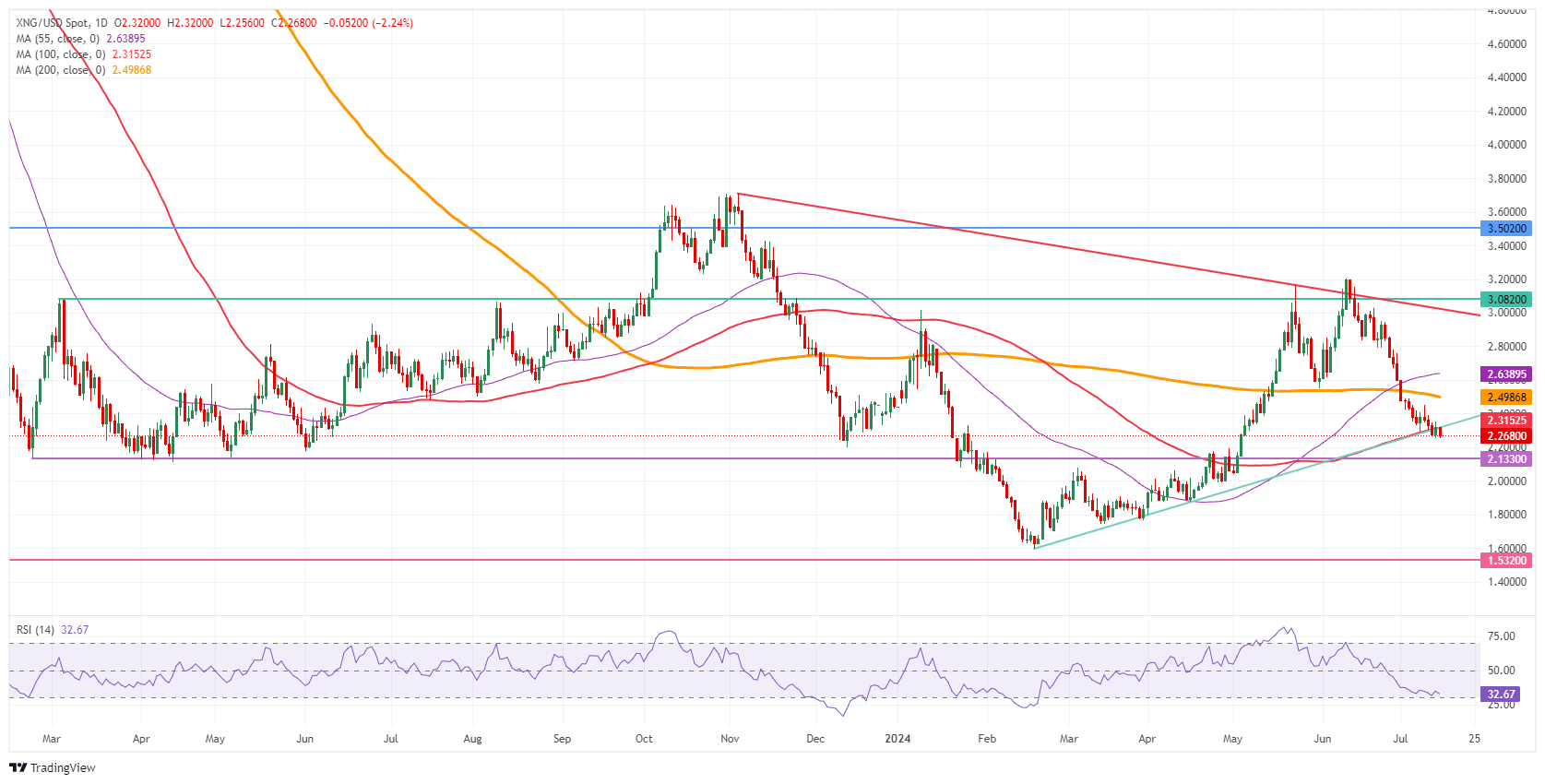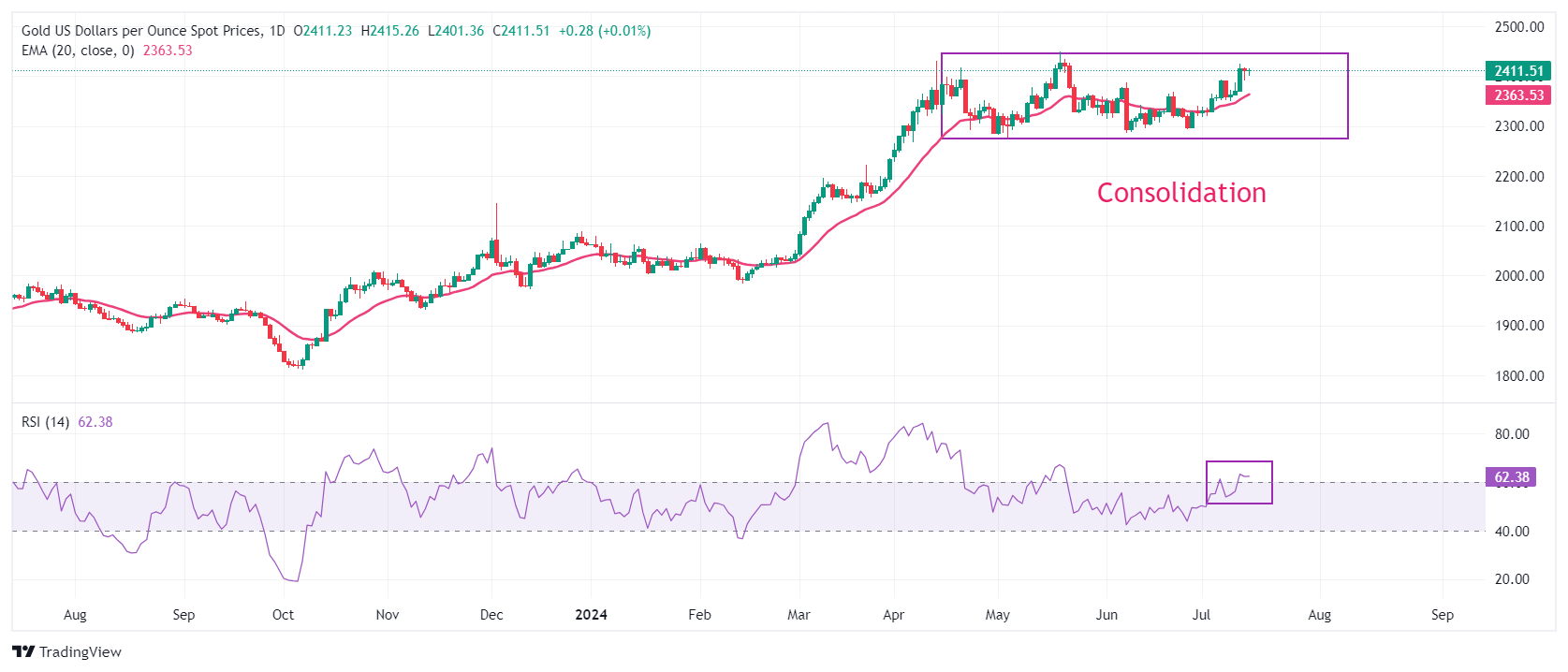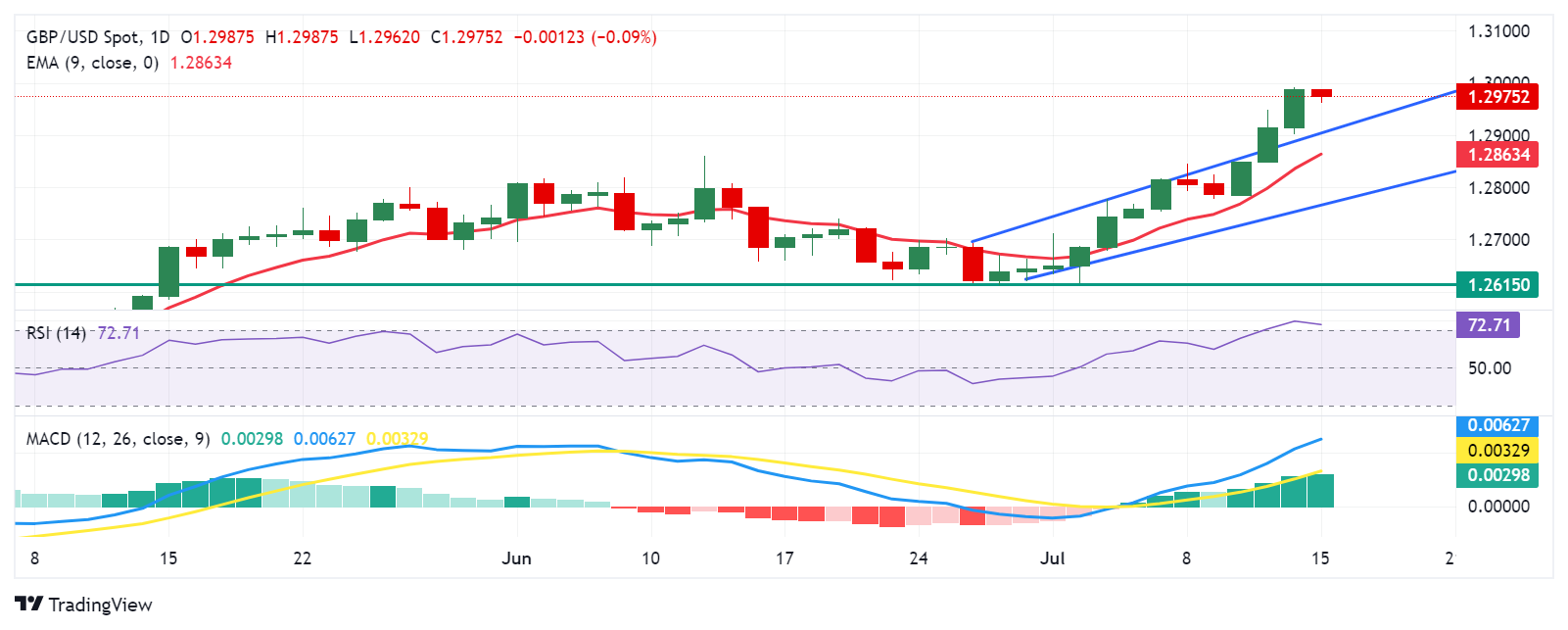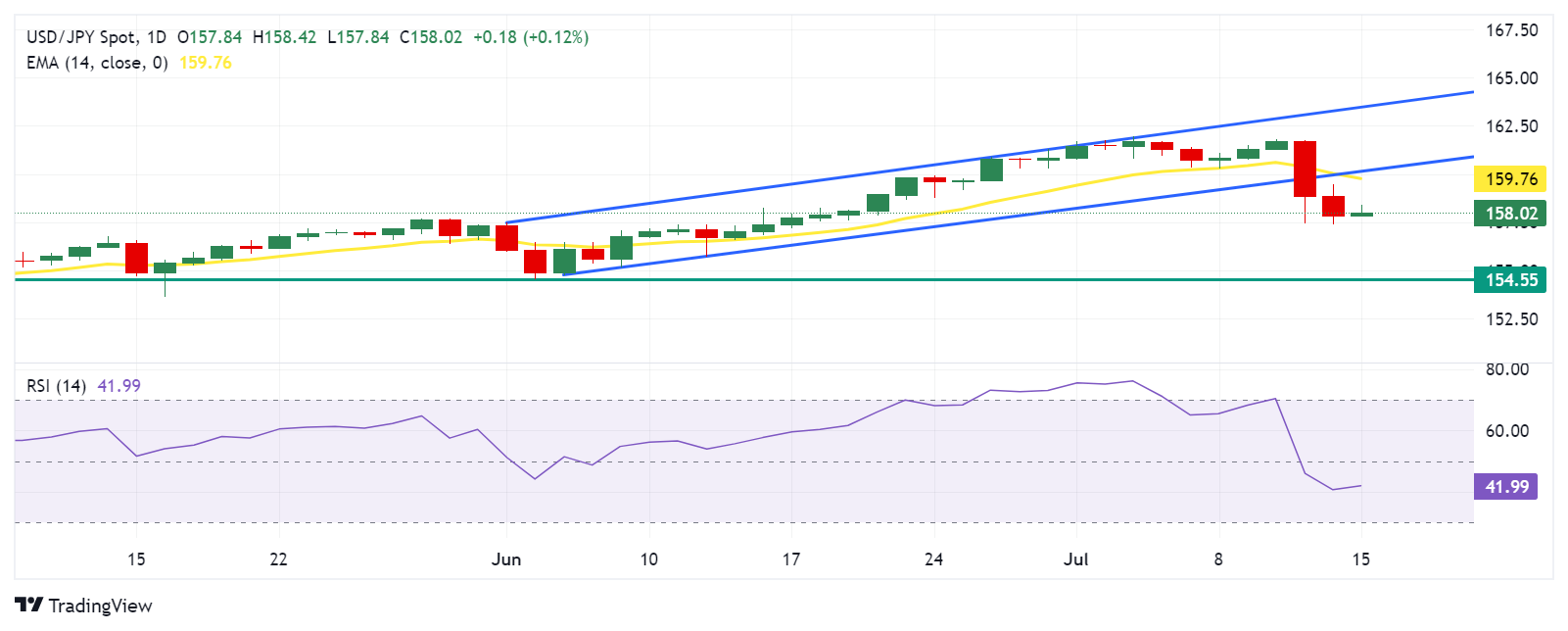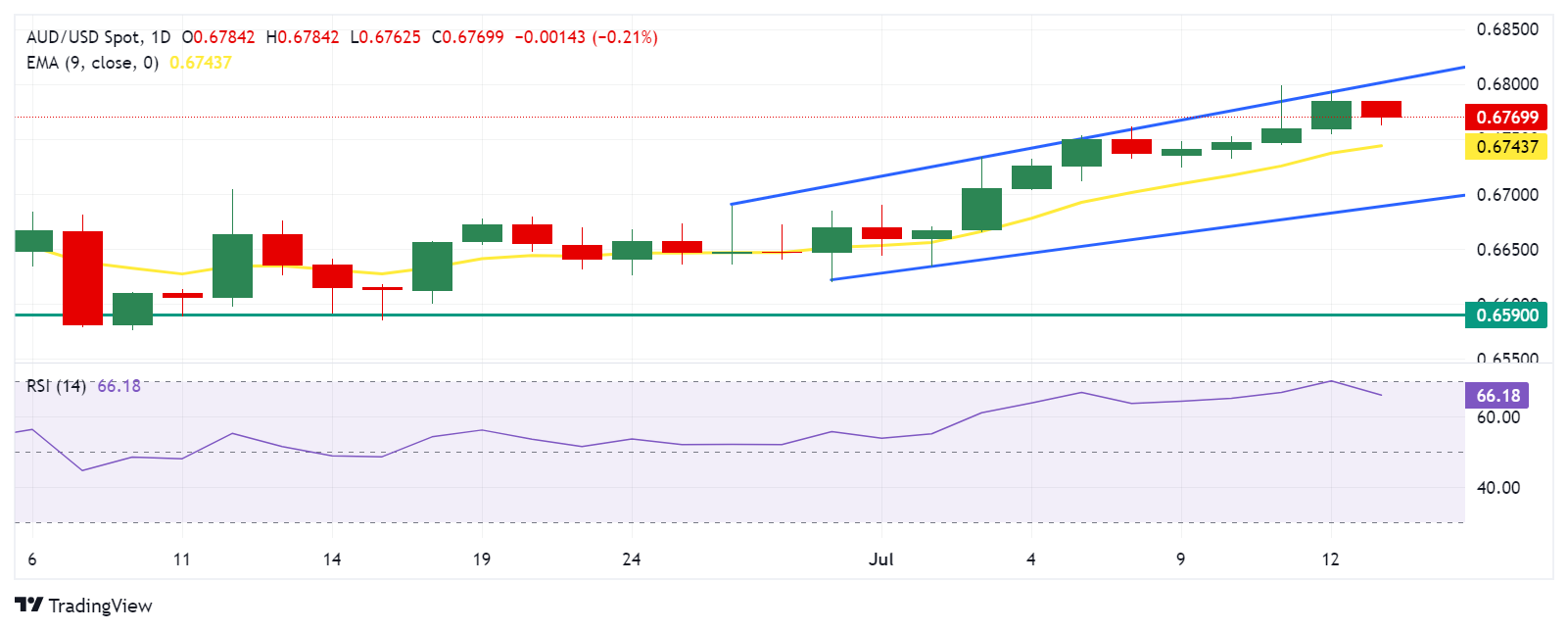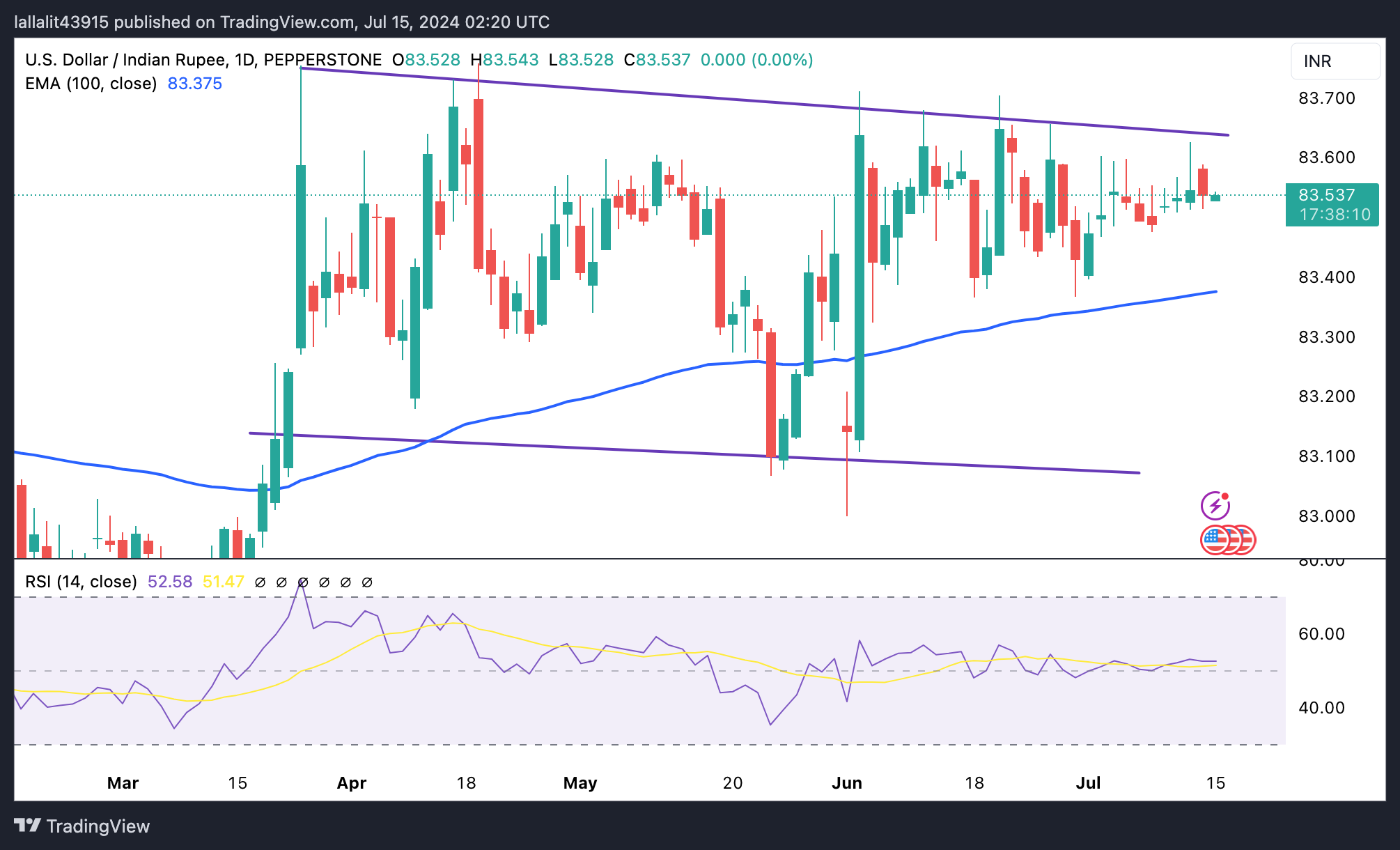- Phân tích
- Tin tức và các công cụ
- Tin tức thị trường
Tin tức thì trường
- NZD/USD trades on a softer note around 0.6075 in Tuesday’s early Asian session.
- New Zealand inflation data is expected to slow more than central bank expects in Q2, paving the way for rate cuts.
- Traders raise their bets on Fed rate cuts in September.
The NZD/USD pair remains on the defensive near 0.6075 during the early Asian session on Monday. The weaker Chinese economic data and modest rebound of the US Dollar (USD) continue to undermine the pair. The US Retail Sales for June will be in the spotlight on Tuesday. The attention will shift to the New Zealand Consumer Price Index (CPI) inflation data, which is due on Wednesday.
New Zealand CPI inflation data is expected to slow more than the Reserve Bank of New Zealand (RBNZ) expects in the second quarter, paving the way for interest-rate cuts. The annual CPI is estimated to show an increase of 3.5% in Q2, compared to the previous reading of 4.0%. On a quarterly basis, the CPI is forecast to rise 0.6% QoQ in Q2. “For easing to begin in August, we would likely need to have seen a significant broad-based downside surprise in the Q2 CPI on 17 July,” Kelly Eckhold, Westpac’s chief economist, said.
Elsewhere, weaker-than-expected Chinese Gross Domestic Product (GDP) data on Monday exerted some mild bearish pressure on the Kiwi. The performance of the Chinese economy tends to influence the Kiwi as China is New Zealand's major trade partner. China’s economy expanded 4.7% YoY in the second quarter (Q2), compared to a 5.3% expansion in the first quarter, according to the National Bureau of Statistics (NBS) on Monday.
On the USD’s front, market players expect the US Federal Reserve (Fed) to start its easy cycle in September. Powell avoided sending a clear signal about when the Fed would begin to cut interest rates, despite a recent cool-down in inflation. Financial markets are now pricing in a September rate cut, with 100% odds of at least 25 basis points (bps) in the fed funds rate when the Federal Open Market Committee (FOMC) meets on September 18.
New Zealand Dollar FAQs
The New Zealand Dollar (NZD), also known as the Kiwi, is a well-known traded currency among investors. Its value is broadly determined by the health of the New Zealand economy and the country’s central bank policy. Still, there are some unique particularities that also can make NZD move. The performance of the Chinese economy tends to move the Kiwi because China is New Zealand’s biggest trading partner. Bad news for the Chinese economy likely means less New Zealand exports to the country, hitting the economy and thus its currency. Another factor moving NZD is dairy prices as the dairy industry is New Zealand’s main export. High dairy prices boost export income, contributing positively to the economy and thus to the NZD.
The Reserve Bank of New Zealand (RBNZ) aims to achieve and maintain an inflation rate between 1% and 3% over the medium term, with a focus to keep it near the 2% mid-point. To this end, the bank sets an appropriate level of interest rates. When inflation is too high, the RBNZ will increase interest rates to cool the economy, but the move will also make bond yields higher, increasing investors’ appeal to invest in the country and thus boosting NZD. On the contrary, lower interest rates tend to weaken NZD. The so-called rate differential, or how rates in New Zealand are or are expected to be compared to the ones set by the US Federal Reserve, can also play a key role in moving the NZD/USD pair.
Macroeconomic data releases in New Zealand are key to assess the state of the economy and can impact the New Zealand Dollar’s (NZD) valuation. A strong economy, based on high economic growth, low unemployment and high confidence is good for NZD. High economic growth attracts foreign investment and may encourage the Reserve Bank of New Zealand to increase interest rates, if this economic strength comes together with elevated inflation. Conversely, if economic data is weak, NZD is likely to depreciate.
The New Zealand Dollar (NZD) tends to strengthen during risk-on periods, or when investors perceive that broader market risks are low and are optimistic about growth. This tends to lead to a more favorable outlook for commodities and so-called ‘commodity currencies’ such as the Kiwi. Conversely, NZD tends to weaken at times of market turbulence or economic uncertainty as investors tend to sell higher-risk assets and flee to the more-stable safe havens.
© 2000-2025. Bản quyền Teletrade.
Trang web này được quản lý bởi Teletrade D.J. LLC 2351 LLC 2022 (Euro House, Richmond Hill Road, Kingstown, VC0100, St. Vincent and the Grenadines).
Thông tin trên trang web không phải là cơ sở để đưa ra quyết định đầu tư và chỉ được cung cấp cho mục đích làm quen.
Giao dịch trên thị trường tài chính (đặc biệt là giao dịch sử dụng các công cụ biên) mở ra những cơ hội lớn và tạo điều kiện cho các nhà đầu tư sẵn sàng mạo hiểm để thu lợi nhuận, tuy nhiên nó mang trong mình nguy cơ rủi ro khá cao. Chính vì vậy trước khi tiến hành giao dịch cần phải xem xét mọi mặt vấn đề chấp nhận tiến hành giao dịch cụ thể xét theo quan điểm của nguồn lực tài chính sẵn có và mức độ am hiểu thị trường tài chính.
Sử dụng thông tin: sử dụng toàn bộ hay riêng biệt các dữ liệu trên trang web của công ty TeleTrade như một nguồn cung cấp thông tin nhất định. Việc sử dụng tư liệu từ trang web cần kèm theo liên kết đến trang teletrade.vn. Việc tự động thu thập số liệu cũng như thông tin từ trang web TeleTrade đều không được phép.
Xin vui lòng liên hệ với pr@teletrade.global nếu có câu hỏi.
